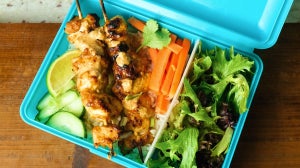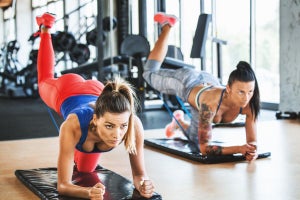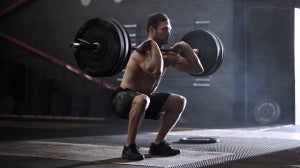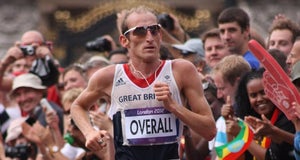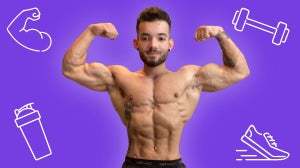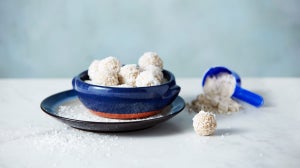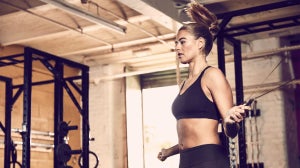
Combat sports and the need to reduce weight for competition go hand in hand. Which foods to consume before and after dropping weight prior to competition is confusing to many athletes.
A balanced controlled reduction in body mass needs to be combined with a carefully planned pre-competition nutrition regime which focuses on both the period of acute loss prior to weigh-ins, and the post weigh-in weight gain (Burke & Cox, 2009).
This is of course the period when extreme and dangerous weight modifying practices are most common.
Weight Cutting: General food rules
There are some key rules to follow in order to guide your pre-competition nutrition plan:
1) It’s a marathon, not a sprint! Weight/ body composition changes should occur over the long term (not in a few hours)
2) Safe reductions in calorific intake (500-1000 k/cal) should be balanced with appropriate levels of protein, carbohydrates and fats.
3) Portion size reduction is the best way to reduce volume of food consumed. Small, regular, frequent meals assist in increasing intake for growth and recovery.
4) Low or reduced fat products should be considered as alternative food sources.
5) Total daily intake should reflect daily energy requirements of training.
6) Appetite satiety can be maintained through high fibre, low glycemic index carbohydrate foods (e.g. non-starchy fruits/ vegetables- banana, apples, pears, spinach, broccoli).
7) Post training carbohydrates will assist recovery in fact carbohydrates are essential during and after training due to the high training demands of combat sports athletes.
8) Evidence suggests that high power performance (as seen in combat sports) can be maintained with low calorie but high carbohydrate diets (1-3). This strategy sustains muscle glycogen content and improves performance.
#1. Red meat
Do you know what the most common micronutrient deficiency is in athletes? Iron. (11).
You know what red meat is full of? Iron.

Sure spinach, seeds, beans and tofu have iron too. However, something like a braised beef brisket contains 7.5mg of iron but also contains 90g of protein (per 270g) (15).
If beef is not your thing venison has 8.6mg of iron (16) and buffalo has 11.6mg (17).
#2. Eggs
For the next on our list of top weight cutting foods we go to an old bodybuilding staple- the simple egg!
Eggs provide another source of protein, as well as providing high levels of essential amino acids to aid recovery and tissue repair. Eggs have a high biological protein value which indicates that the body uses this form of protein efficiently, and that a high value of amino acids is provided by the food but are not lost during digestion (12).
Other added benefits of eggs are high levels of choline (an important mineral for nerve signalling in the brain), and they sit high on the satiety index meaning they make you feel full (14)! Very important during a weight cutting period to stop snacking!
Eggs are also a very adaptable in a dietary sense as they can be prepared in a variety of ways. This means they can be eaten without the chance of you or your athlete getting too bored with the nutrition plan!
#3. Swordfish
A 100g serving of swordfish will include 164 calories and 27g of protein (4). In fact it is 70% protein but also has a high protein quality amino acid score of 148 (which includes leucine which is important for muscle synthesis).
Added nutrient benefits also include 20% Vitamin B6, 36% Vitamin B12 and 62% Niacin (which assists our body to increase levels of “good” cholesterol- high density lipo-protein) of your recommended daily allowances (5).

Importantly, as a meal staple swordfish is a lighter form of protein ingestion (compared perhaps to steak or chicken) and may be more tolerable for combat sports athletes to consume post training when protein consumption is best utilised.
NB: Scientifically there is minimal difference on satiety and amino acid profiles between beef, chicken and fish as protein source (6), as such it can be put down to athlete taste preference as to which protein source you choose!
#4. Cheese
This probably not an expected inclusion in this list, however I will try to justify its position!
Cheese (for example cheddar) is not only a source of protein (32.9g per 132g) but also an essential source of calcium! In fact a cup of diced cheddar would give you 952mg of calcium (or 95% of your RDA) (13).
This is important particularly for female combat sport athletes who are managing weight cutting body changes, and may be at risk of bone density problems due to the female athlete triad of disordered eating, amenorrhea and osteopenia (9-10). During extreme food consumption energy levels and appropriate calcium intake should be sustained. As such it is advised that calcium should increase to 1,200-1,500mg/ day in females with impaired menstrual function (11). This is particularly important with athletes competing in any of the striking arts (e.g. Tae Kwon Do, MMA, kickboxing).
#5. Porridge Oats
A day of intense training involving technical and strength and conditioning sessions needs to be started with food to act as fuel for your endeavours.
It is considered important in combat sports to sustain a diet high in carbohydrates but low calorie levels to fuel performance whilst losing body mass. In fact carbohydrate consumption should be specified based upon the energy requirements of particular training days (7).

Oats are a great way to start a day which is full of combat sports training. A cup of oats (156g) provides a massive 2541kj (607 calories) to use as energy (425cal from carbohydrates). It also provides 173mg of omega-3 fatty acids, as well as being packed with various other vitamins and minerals (8).
The type of complex carbohydrates found in oats allows a slow release of energy to sustain activity levels for longer periods and keeping you feeling full. Adding milk gives a boost of protein, and your breakfast can be varied by adding fruit or honey as you prefer to. What a brilliant choice for a post weight cut meal to gain energy when severely depleted.
Oats also have 82% of your RDA of phosphorus, which is a key mineral stored in our bones which assists energy production and muscle recovery after exercise (8).
Extras: Carbohydrate-rich drinks and snacks (really!)
So not exactly a specific food- however carbohydrate drinks and snacks can be an effective nutrition tool for some combat sports athletes.
Timing for nutrition is everything and as a substitute for real food sometimes getting carbohydrates and protein in to fuel the recovery before the next session becomes the priority.
Following intense work outs, between competitive bouts and particularly after weigh ins athletes may not want to physically eat but consumption of protein and carbohydrates is essential. This is the time that high carbohydrate snacks and drinks are best utilised (11)!
Take Home Message
Weight cuts are an extreme dietary practice which can be assisted by a long term strategy for body weight and composition. The drastic reduction in bodyweight during a cut needs to be counteracted by appropriate levels of protein, carbohydrates and essential minerals such as iron- even if calories are reduced!
Refuelling post-workout needs to be planned with appropriate sources of both your macro and micro-nutrients to best prepare for combat sports competition. Try these weight cutting foods or have a see what will suit you best in the Myprotein Diet and Weight Loss Range.
Our articles should be used for informational and educational purposes only and are not intended to be taken as medical advice. If you're concerned, consult a health professional before taking dietary supplements or introducing any major changes to your diet.

